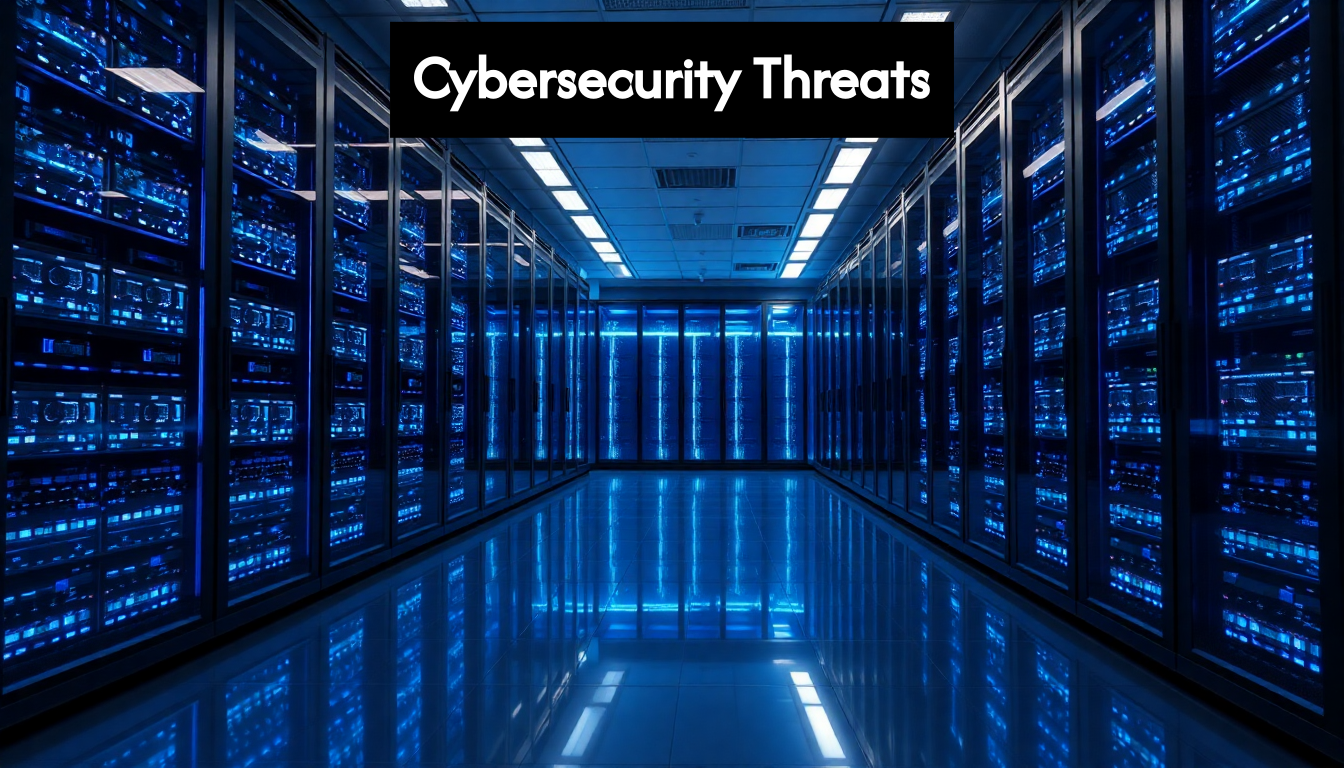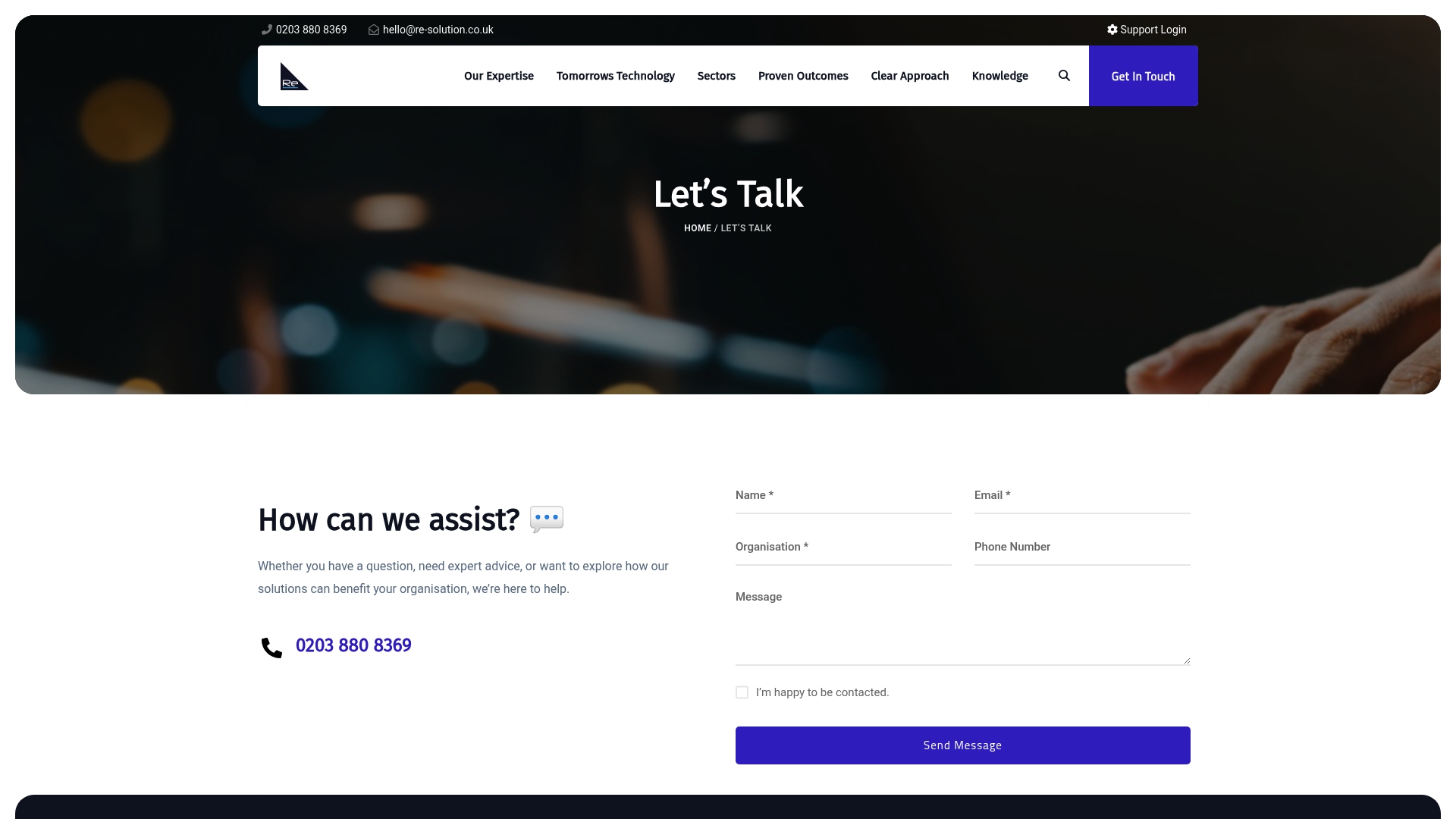
The cybersecurity landscape in 2024 is evolving at an unprecedented rate. Global cybercrime costs are projected to reach a staggering £9.22 trillion this year, revealing just how critical the situation has become. But here’s the shocking part: many organisations are surprisingly unprepared despite the looming threats. The real twist? The biggest risks might not come from external hackers but from insider vulnerabilities that often go unnoticed until it’s too late.
Table of Contents
- Emerging Cyber Threat Landscape
- Critical Vulnerabilities And Risks
- 2025 Cybersecurity Predictions And Trends
- Actionable Steps For Digital Security
Quick Summary
| Takeaway | Explanation |
|---|---|
| Cybercrime Costs are Escalating | Global cybercrime costs are projected to reach £9.22 trillion in 2024, indicating an urgent need for enhanced cybersecurity measures across all sectors to protect against growing financial risks. |
| Supply Chain Vulnerabilities are Critical | Attacks exploiting the interconnected nature of supply chains pose significant risks; organisations must assess and manage third-party security to mitigate these threats effectively. |
| Strengthening Identity and Access Management is Essential | With 44.7% of data breaches involving credential abuse, organisations should prioritise multi-factor authentication (MFA) and privilege management to secure access controls. |
| Regular Security Assessments are Required | Conducting continuous security assessments, including vulnerability scanning and penetration testing, is vital to identify and remedy weaknesses before they can be exploited by attackers. |
| Invest in Human-Centric Security Training | Developing a security-aware culture through regular, contextual training and recognising safe behaviours is crucial, as human error remains a significant factor in successful cyberattacks. |
Emerging Cyber Threat Landscape

The cybersecurity horizon in 2024 presents an increasingly sophisticated and dynamic threat landscape that continues to evolve at an alarming pace. As organisations across sectors—from educational institutions to manufacturing companies and hospitality businesses—digitise their operations, they simultaneously expand their potential attack surface for malicious actors.
The Scale and Impact of Modern Threats
The financial implications of today’s cyber threats are staggering. Global cybercrime costs are projected to reach an astounding £9.22 trillion in 2024, with forecasts suggesting this figure could balloon to £13.82 trillion by 2028, according to research from the University of San Diego. This exponential growth reflects both the increasing frequency and sophistication of attacks targeting vulnerable systems worldwide.
What’s particularly concerning for organisations in 2024 is the democratisation of cyber attack capabilities. Advanced hacking tools that were once the exclusive domain of nation-states are now accessible to less sophisticated actors through underground marketplaces and forums. This proliferation of attack capabilities has lowered the barrier to entry for cybercriminals, creating a more dangerous environment for all organisations regardless of size or sector.
Prominent Threat Vectors in 2024
Ransomware continues to dominate the threat landscape, with an estimated 66% of global organisations experiencing ransomware attacks in 2023, as reported by Deloitte’s cybersecurity threat trends report. These attacks have evolved beyond simple encryption of files to multi-faceted extortion schemes involving data theft, public shaming, and service disruption.
Credential compromise represents another critical vulnerability, responsible for 44.7% of all data breaches. This staggering statistic highlights how attackers frequently bypass sophisticated security systems simply by using stolen or compromised legitimate credentials. For shared workspaces and educational institutions managing multiple user accounts, this presents a significant challenge requiring robust identity management solutions.
Cloud security concerns have also accelerated dramatically in 2024. With the widespread adoption of cloud services across all sectors, intrusions into cloud environments have increased by 75% over the past year, while cloud-conscious attacks have surged by an alarming 110%, according to National University research. This trend is particularly relevant for property developers, hospitality businesses, and educational institutions that increasingly rely on cloud infrastructure to manage their operations.
The Widening Cybersecurity Divide
A troubling development in the 2024 threat landscape is what experts term “cybersecurity inequity”—significant differences in resilience capabilities between large enterprises and smaller organisations. The World Economic Forum’s Global Cybersecurity Outlook highlights that this gap leaves many businesses disproportionately vulnerable to attacks. For sectors like manufacturing, logistics, and hospitality—which often include organisations of varying sizes—this disparity creates concerning security implications.
As the Information Security Forum pointedly warns, “Over-reliance on fragile connectivity creates the potential for premeditated internet outages capable of bringing trade to its knees and heightened risk that ransomware will be used to hijack the Internet of Things.” This statement underscores the existential threat that cybersecurity issues pose to businesses across all sectors in 2024 and beyond.
Critical Vulnerabilities and Risks
As we navigate through 2024, several critical vulnerabilities and risks have emerged that pose significant threats to organisations across various sectors. Understanding these vulnerabilities is crucial for educational institutions, manufacturing companies, logistics businesses, and others to develop effective cybersecurity strategies.
Supply Chain Vulnerabilities
Supply chain attacks have become increasingly sophisticated in 2024, targeting the interconnected nature of modern business operations. These attacks exploit the trust relationships between organisations and their suppliers, using compromised software updates or third-party services as infection vectors. For manufacturing companies and logistics businesses, where supply chain integrity is paramount, these vulnerabilities can have devastating consequences.
The complexity of modern supply chains creates numerous entry points for attackers. When a supplier’s system is compromised, malicious code can be distributed to all customers through legitimate channels such as software updates. This approach allows attackers to bypass traditional security controls and gain access to otherwise well-protected environments.
For property developers and housing associations managing multiple contractors and service providers, supply chain risk management has become a critical component of cybersecurity strategy. Each third-party relationship represents a potential vulnerability that must be assessed and managed.
Identity and Access Management Weaknesses
The statistics are alarming – 44.7% of all data breaches involve the abuse of valid credentials, according to Deloitte’s research. This makes identity and access management (IAM) weaknesses one of the most critical vulnerabilities facing organisations today.
A common misconception is that credential breaches only result from poor password choices. However, even complex, unique passwords can be compromised through sophisticated phishing attacks, malware, or credential theft from third-party breaches. For educational institutions managing thousands of student and staff accounts, or shared workspaces with constantly changing users, these vulnerabilities present significant challenges.
The growth of remote and hybrid work models has exacerbated these risks by expanding the authentication perimeter. Employees accessing systems from various locations and devices create additional opportunities for credential theft and compromise.
Cloud Configuration Errors
As organisations rapidly migrate to cloud environments, misconfigured cloud resources have become a primary attack vector. The dramatic 75% increase in cloud environment intrusions reported by National University highlights the severity of this vulnerability. These configuration errors often occur due to a lack of cloud security expertise, the complexity of cloud platforms, or simple oversight.
Common cloud misconfigurations include excessive permissions, unencrypted data storage, publicly accessible servers, and inadequate network segmentation. For hospitality businesses storing sensitive customer data or educational institutions managing student information, these vulnerabilities can lead to significant data breaches and compliance violations.
The risks are particularly acute for smaller organisations that may lack dedicated cloud security resources. This contributes to the cybersecurity inequity highlighted by the World Economic Forum, where smaller businesses face disproportionate vulnerability despite often having fewer resources to address these challenges.
IoT and Operational Technology Exposures
The proliferation of Internet of Things (IoT) devices and operational technology (OT) systems has created new attack surfaces across all sectors. From smart building systems in property development to industrial control systems in manufacturing, these connected devices often lack robust security controls.
Many IoT devices ship with default passwords, unpatched vulnerabilities, or insufficient encryption, making them attractive targets for attackers. Once compromised, these devices can serve as entry points to broader networks or be hijacked for large-scale distributed denial-of-service attacks.
For logistics and warehousing businesses using automated systems or manufacturing companies with industrial IoT deployments, these vulnerabilities pose risks not only to data security but also to physical safety and operational continuity. As the Information Security Forum warns, there’s a “heightened risk that ransomware will be used to hijack the Internet of Things,” potentially disrupting critical infrastructure and business operations.
Addressing these critical vulnerabilities requires a comprehensive approach to cybersecurity that includes regular vulnerability assessments, security awareness training, robust identity management, and careful configuration of cloud resources. For organisations across all the target sectors, understanding these specific vulnerabilities is the first step toward building effective defences against the evolving cyber threats of 2024.
2025: Cybersecurity Predictions and Trends

As we look ahead to 2025, several emerging trends and developments in the cybersecurity landscape will shape how organisations protect their digital assets. These predictions are particularly relevant for educational institutions, manufacturing companies, logistics businesses, shared workspaces, hospitality providers, and property developers seeking to bolster their security posture against evolving threats.
AI-Powered Threats and Defences
The cybersecurity battlefield in 2025 will be increasingly dominated by artificial intelligence on both sides of the conflict. Threat actors are already leveraging AI to develop more sophisticated attacks, from generating convincing phishing emails to identifying vulnerabilities in systems. By 2025, we expect to see fully autonomous attack systems capable of adapting in real-time to defensive measures.
Simultaneously, defensive AI technologies will evolve to provide more robust protection. Security tools enhanced with machine learning will be essential for detecting subtle anomalies that indicate breaches and responding to threats at machine speed. For manufacturing companies with complex operational technology environments or hospitality businesses processing large volumes of customer data, these AI-powered security tools will be particularly valuable.
For organisations with limited in-house security expertise, AI-augmented security solutions will help level the playing field, potentially addressing the cybersecurity inequity highlighted by the World Economic Forum. However, this technology is not a silver bullet and must be paired with human expertise for optimal effectiveness.
Quantum Computing: Threat and Opportunity
The advancement of quantum computing capabilities presents both significant threats and opportunities for cybersecurity in 2025. As quantum computers become more powerful, they will eventually be capable of breaking many of the cryptographic algorithms that currently protect sensitive data and communications.
Forward-thinking organisations across all sectors should begin preparing for this “crypto-apocalypse” by implementing quantum-resistant encryption algorithms. This transition is particularly critical for educational institutions handling sensitive research data and property developers or housing associations storing long-term resident information that requires protection for many years.
On the defensive side, quantum technologies will also enable new security capabilities, including truly random number generation for stronger encryption and quantum key distribution for tamper-evident communications. The race between quantum threats and quantum defences will be a defining characteristic of the 2025 cybersecurity landscape.
Regulatory Evolution and Compliance Challenges
By 2025, we anticipate a significant evolution in the regulatory environment governing cybersecurity and data protection. According to the World Economic Forum, organisations are already facing “expanding regulatory demands” that compound their security challenges. This regulatory pressure will intensify as governments respond to high-profile breaches and growing public concern about digital security.
New regulations will likely impose stricter requirements for breach notification, security standards, and algorithmic transparency. The compliance burden will be particularly heavy for sectors handling sensitive personal data, such as educational institutions and hospitality businesses. Manufacturing companies and logistics operations with cross-border data flows will need to navigate an increasingly complex international regulatory landscape.
Organisations that proactively develop robust governance frameworks and compliance processes will be better positioned to adapt to this evolving regulatory environment. Investment in automated compliance tools and expertise will become a competitive advantage rather than merely a cost centre.
Supply Chain Security Transformation
The vulnerabilities in interwoven supply chains highlighted by the World Economic Forum will drive a transformation in supply chain security approaches by 2025. We expect to see the emergence of new standards, technologies, and practices designed to verify the security of each component in complex supply networks.
Digital supply chain passports may become standard, providing verifiable evidence of security compliance throughout the supply chain. For manufacturing companies and logistics businesses with extensive supplier networks, these tools will be essential for managing third-party risk.
Shared workspaces and property developers will also need to consider the security implications of their physical and digital supply chains, from building management systems to service providers with access to sensitive information.
Human-Centric Security Design
The persistent challenge of social engineering and human error in cybersecurity breaches will drive a shift toward more human-centric security design by 2025. Rather than treating people as the weakest link, forward-thinking organisations will redesign their security controls to work with human psychology instead of against it.
This approach includes security interfaces that make secure choices intuitive, contextual training that builds practical skills rather than merely awareness, and authentication systems that balance security with usability. For educational institutions and hospitality businesses with diverse user populations, human-centric security will be particularly important for maintaining both protection and positive user experiences.
As 71% of chief risk officers anticipate severe organisational disruptions due to cyber risks according to the World Economic Forum, investing in human-centric security approaches will be a crucial strategy for building organisational resilience in the face of growing threats.
Actionable Steps for Digital Security
With the cybersecurity landscape becoming increasingly complex, organisations across sectors need practical, implementable strategies to protect their digital assets. This section outlines concrete steps that educational institutions, manufacturing companies, logistics businesses, shared workspaces, hospitality providers, and property developers can take to strengthen their security posture.
Assess Your Current Security Posture
Before implementing new security measures, it’s essential to understand your current vulnerabilities. Start with a comprehensive security assessment that examines your technical infrastructure, organisational processes, and human factors. This assessment should identify critical assets, evaluate existing controls, and pinpoint security gaps.
For educational institutions with diverse systems and user populations, this might involve cataloguing sensitive data repositories and evaluating access controls. Manufacturing companies should focus on identifying vulnerabilities in operational technology and industrial control systems. Property developers and housing associations need to assess both physical and digital security measures protecting tenant information and building management systems.
Regular vulnerability scanning and penetration testing should be part of this ongoing assessment process. These proactive measures help identify weaknesses before attackers can exploit them. As the cybersecurity threat landscape evolves, security assessments should be conducted at least annually, with additional reviews following significant system changes.
Implement Multi-Layered Defences
No single security control can provide comprehensive protection against today’s sophisticated threats. Organisations should implement multiple layers of security controls that work together to protect critical assets—a concept known as defence in depth.
At the perimeter, next-generation firewalls and intrusion prevention systems provide the first line of defence. For cloud environments, which have seen a 75% increase in intrusions according to National University research, cloud access security brokers and secure web gateways help control access to resources and filter malicious content.
Endpoint protection platforms that combine traditional antivirus capabilities with behavioural monitoring and threat intelligence are essential for defending individual devices. For shared workspaces with diverse user devices, endpoint security is particularly critical.
Data protection measures, including encryption for both data in transit and at rest, form another crucial layer. Hospitality businesses handling payment information and educational institutions storing student records should prioritise robust encryption practices to protect sensitive data even if perimeter defences are breached.
Strengthen Identity and Access Management
Given that 44.7% of data breaches involve credential abuse, as reported by Deloitte, strengthening identity and access management (IAM) should be a top priority. Implement multi-factor authentication (MFA) across all systems, especially for privileged accounts and remote access. For educational institutions managing thousands of accounts, a phased MFA rollout starting with administrative accounts can make implementation more manageable.
Privilege management is equally important—users should have access only to the resources necessary for their roles (principle of least privilege). Regular access reviews help ensure that permissions remain appropriate as roles change. Manufacturing companies with complex operational hierarchies should pay particular attention to role-based access controls for critical systems.
Consider implementing single sign-on (SSO) solutions that simplify the user experience while maintaining security. SSO reduces password fatigue and can improve security by centralising authentication controls and monitoring.
Develop a Robust Incident Response Plan
Despite best efforts at prevention, security incidents will occur. A well-developed incident response plan enables organisations to detect, contain, and recover from breaches quickly, minimising damage. This plan should define roles and responsibilities, communication protocols, and specific procedures for different types of incidents.
The plan should be documented, regularly tested through tabletop exercises or simulations, and updated based on lessons learned. For logistics businesses and hospitality providers where operational continuity is critical, these plans should include business continuity and disaster recovery components.
As the World Economic Forum notes, organisations must develop and routinely rehearse comprehensive incident response plans, accounting for the increased sophistication of cyberattacks expected through 2025.
Invest in Security Awareness and Training
Human error remains a significant factor in successful cyberattacks. Regular security awareness training helps staff recognise and respond appropriately to threats like phishing and social engineering. This training should be contextual and role-specific rather than generic.
For educational institutions, this might include specialised training for faculty handling sensitive research data. In manufacturing environments, operators of industrial systems should receive targeted training on recognising signs of compromise in operational technology.
Beyond formal training, build a security-conscious culture by recognising and rewarding secure behaviours. Regular communication about emerging threats and security best practices helps maintain awareness throughout the organisation.
Manage Supply Chain Risk
As supply chain attacks become more common, organisations must establish processes for assessing and managing third-party security risks. This includes security questionnaires for vendors, contract clauses that specify security requirements, and regular audits of critical suppliers.
For property developers working with numerous contractors, or manufacturing companies with complex supplier networks, a tiered approach that applies more rigorous controls to higher-risk relationships can make supply chain security manageable.
Consider joining industry information-sharing groups that provide early warnings about supply chain threats affecting your sector. This collaborative approach to security helps organisations stay ahead of emerging risks that might impact their supplier ecosystem.
By implementing these actionable steps, organisations across sectors can significantly improve their security posture. While perfect security is unattainable, a strategic approach that combines technical controls, organisational processes, and human factors can substantially reduce the risk of successful cyberattacks.
Frequently Asked Questions
What are the top cybersecurity threats in 2024?
In 2024, the primary cybersecurity threats include ransomware attacks, credential compromise, and cloud security concerns. Ransomware continues to be prevalent, with 66% of global organisations experiencing such attacks, while nearly 44.7% of data breaches result from credential abuse, making identity management crucial.
How much will global cybercrime cost in 2024?
Global cybercrime costs are projected to reach a staggering £9.22 trillion in 2024. This figure highlights the urgent need for robust cybersecurity measures across all sectors to combat escalating cyber threats.
Why are supply chain vulnerabilities a critical concern in cybersecurity?
Supply chain vulnerabilities pose significant risks because they exploit trust relationships between organisations and their suppliers. Compromised software updates or third-party services can be used as infection vectors, potentially affecting all customers connected to a compromised supplier.
How can organisations improve their cybersecurity posture in 2024?
Organisations can enhance their cybersecurity posture by conducting regular security assessments, implementing multi-layered defences, strengthening identity and access management, developing robust incident response plans, and investing in security awareness training for employees.
Elevate Your Cybersecurity Posture Today
Navigating the daunting threats of 2024 doesn’t have to be a solo journey. As highlighted in our recent article on Cybersecurity Threats 2024: Trends and 2025 Predictions, organisations are facing escalating costs and sophisticated attack methods, particularly from internal vulnerabilities and supply chain weaknesses. The alarming prediction of £9.22 trillion in cybercrime costs underscores the urgent need for robust security strategies tailored to your specific organisational context.

At Re-Solution, we specialise in Managed IT Services and Security and Compliance Solutions that empower organisations across sectors—including education, manufacturing, and hospitality—to mitigate these risks effectively. We understand the critical pain points such as identity and access management weaknesses and the imperative for multi-layered defences. With over 35 years of expertise, we provide comprehensive infrastructure audits and Network as a Service (NaaS) solutions tailored to your unique needs.
Don’t let your organisation fall victim to avoidable breaches—act now to strengthen your cybersecurity measures. Visit https://re-solution.co.uk today to discover how our innovative solutions can secure your digital future!
